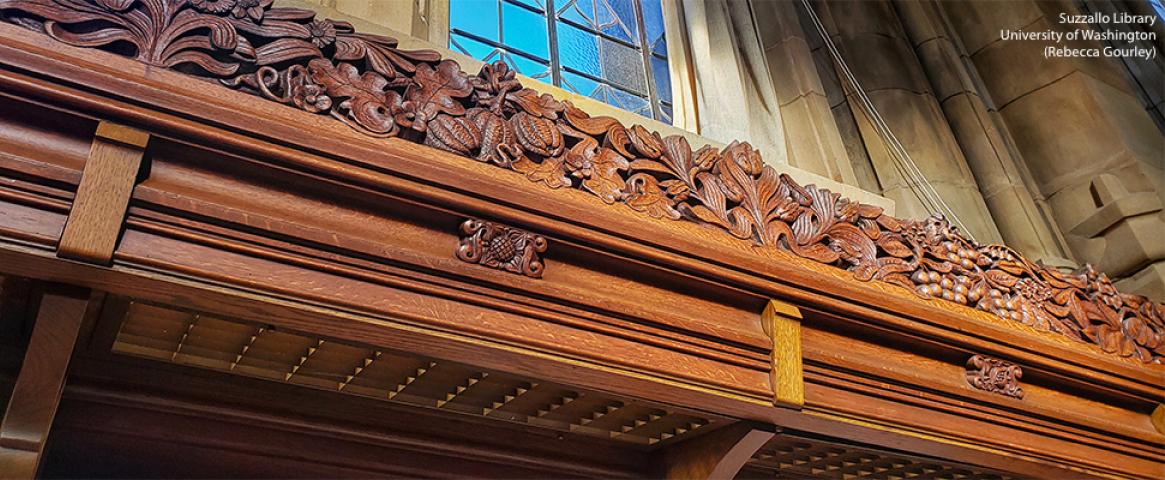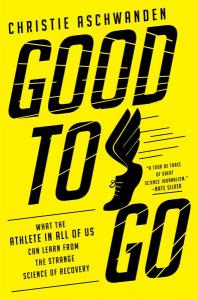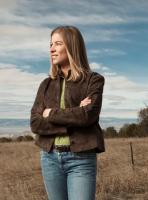
Christie Aschwanden: Good to Go
For this column, NASW book editor Lynne Lamberg asks NASW authors to tell how they came up with the idea for their book, developed a proposal, found an agent and publisher, funded and conducted research, and put the book together. She also asks what they wish they had known before they began working on their book, what they might do differently the next time, and what tips they can offer aspiring authors. She then edits the A part of that Q&A to produce the author reports you see here.
Publication of NASW members’ reports in Advance Copy does not constitute NASW’s endorsement of their books. NASW welcomes your comments, and hopes this column stimulates productive discussions.
GOOD TO GO:
WHAT THE ATHLETE IN ALL OF US CAN LEARN
FROM THE STRANGE SCIENCE OF RECOVERY
Christie Aschwanden
W.W. Norton & Company, February 5, 2019, $27.95
ISBN-10: 039325433X; ISBN-13: 978-0393254334
Aschwanden reports:
GOOD TO GO is a book about the scientific process that masquerades as a sports book. It takes a critical look at the science and marketing around recovery products like cryotherapy, infrared saunas, foam rollers, and nutritional supplements. In the process, it examines scientific issues like reproducibility, publication bias, and p-hacking.
Recovery has become a buzzword in the sports community that has spurred a lot of products. Science is often used as a marketing tactic, with pseudoscientific claims offered as a way of lending legitimacy to products.
The subject matter was a natural fit for me, as I have competed seriously as a runner and cyclist and was an elite cross-country skier for many years.
I spent about a year researching the book, and then another six or seven months writing. I did all of this while working as the lead science writer at FiveThirtyEight. I learned that writing a book “on the side” is not a sustainable way to write a book. My work swallowed my life. I won’t do that again.
You shouldn’t write a book unless you can’t not write it. Book writing is a long, hard process, and it would have been much harder if I hadn’t been so obsessed with the subject matter.
I wrote my book in Scrivener, which allowed me to keep all of my research and writing in one (big) file where I could easily search, organize and arrange it. I kept a spreadsheet of the people I interviewed, and used Mendeley to organize the hundreds of scientific papers I read. I may use Zotero next time, but I’d say that the most important thing is to find a system for saving and searching your pdfs and stick to it. Mendeley allowed me to export bibliography notes with one click, which made things much easier when I was doing the notes section. Scrivener also allows you to create footnotes or endnotes, and these features saved me time during the fact-checking. I hired a fact-checker, and she was great. I found mine on a list of fact checkers that Brooke Borel has compiled.
Contact info:
- Christie Aschwanden, christie@nasw.org, https://christieaschwanden.com, https://www.goodtogobook.com/; Blog: http://www.lastwordonnothing.com/category/christie/, Twitter: @CragCrest https://twitter.com/cragcrest/, Instagram: @CragCrest
- Agent: Alice Martell, afmartell@themartellagency.com
- Publicist: Will Scarlett, 212-790-4325, wscarlett@wwnorton.com
NASW members: will your book be published soon? Take advantage of this opportunity for shameless self-promotion. Submit your report for Advance Copy.
Tell your fellow NASW members how you came up with the idea for your book, developed a proposal, found an agent and publisher, funded and conducted research, and put the book together. Include what you wish you had known before you began working on your book, or had done differently.
See https://www.nasw.org/advance-copy-submission-guidelines.
View Advance Copy archives at https://www.nasw.org/member-article/advance-copy.
Thinking of writing a book? If you are a NASW member, you may access a list of more than 150 books and online resources to help you craft your book proposal, find an agent and funding sources, negotiate your contract, learn about self-publishing, publicize and market your book, and more at https://www.nasw.org/article/write-book.
Send book info and questions about book publishing to Lynne Lamberg, NASW book editor, llamberg@nasw.org.
Banner image credit: Rebecca Gourley, University of Washington. The oak bookcases along the walls of the famous Reading Room in the University of Washington's Suzzallo Library are topped with hand-carved friezes representing native plants of Washington State, including salal, Douglas fir, scrub oak, grape, dogwood, mountain ash, rhododendron, pear, trillium, salmon berry, wild rose, apple, marigold, cantaloupe, tulip and cherry.
Advance Copy
The path from idea to book may take myriad routes. The Advance Copy column, started in 2000 by NASW volunteer book editor Lynne Lamberg, features NASW authors telling the stories behind their books. Authors are asked to report how they got their idea, honed it into a proposal, found an agent and a publisher, funded and conducted their research, and organized their writing process. They also are asked to share what they wish they’d known when they started or would do differently next time, and what advice they can offer aspiring authors. Lamberg edits the authors’ answers to produce the Advance Copy reports.
NASW members: Will your book be published soon? Visit www.nasw.org/advance-copy-submission-guidelines for information on submitting your report.
Publication of NASW author reports in Advance Copy does not constitute NASW's endorsement of any publication or the ideas, values, or material contained within or espoused by authors or their books. We hope this column stimulates productive discussions on important topics now and in the future as both science and societies progress. We welcome your discussion in the comments section below.


